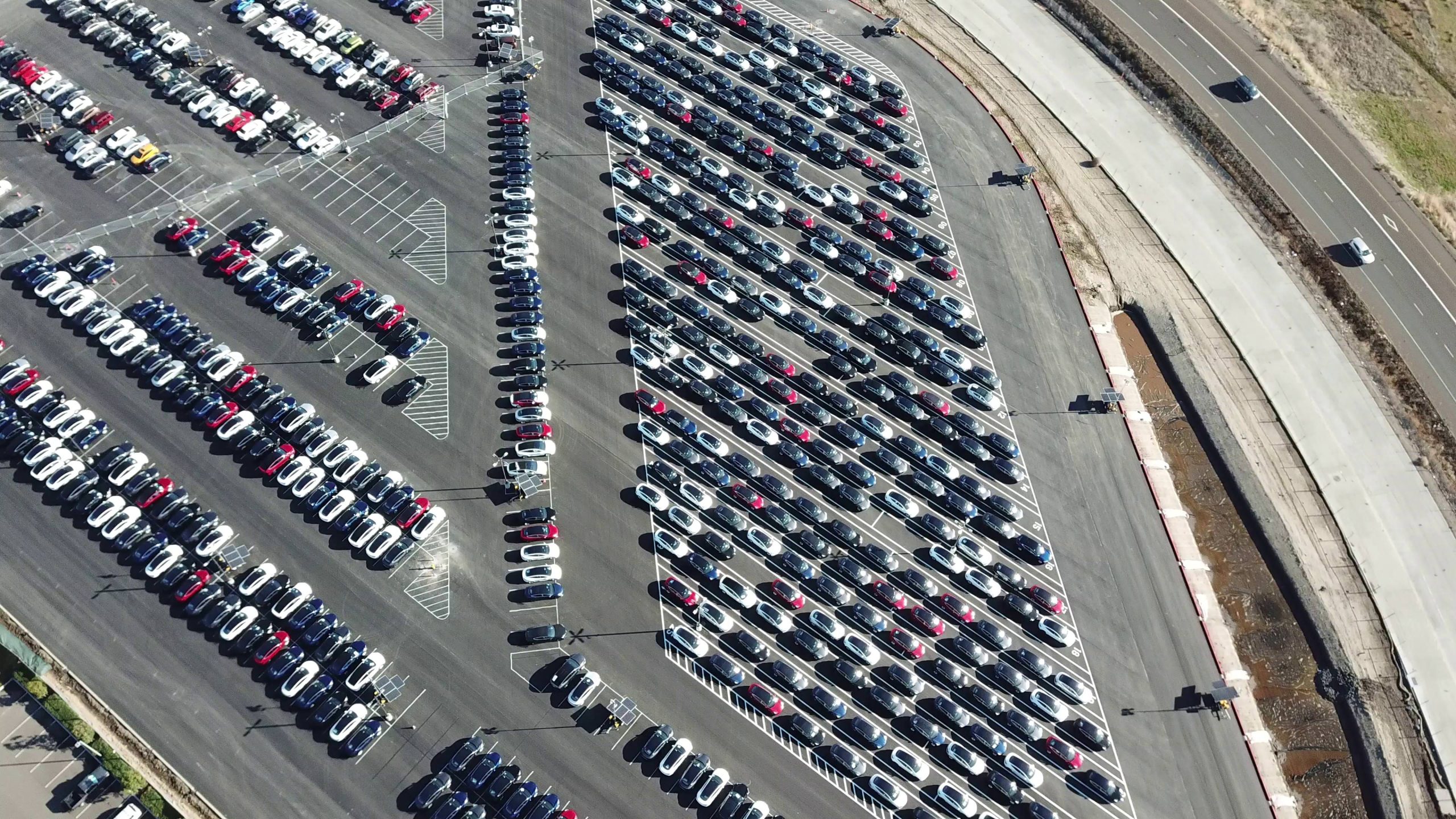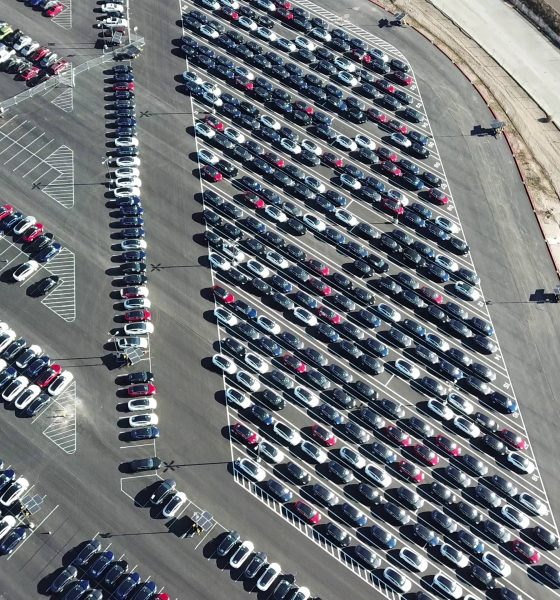

Investor's Corner
Tesla’s Q4 2018 delivery and production report: 63k Model 3 delivered, 86.5k total cars produced
Tesla has released its production and delivery figures for the fourth quarter of 2018, capping off what could only be described as a historic year for the electric car maker. In Q4 2018, Tesla produced a total of 86,555 vehicles, which is 8% more than its prior all-time-high in the third quarter. Deliveries also grew to 90,700 vehicles, a number that’s also 8% more than Q3 2018’s all-time-high.
Tesla’s Q4 production numbers are comprised of 61,394 Model 3 vehicles, in line with the company’s guidance and 15% more than its already notable figures in the third quarter. Tesla also produced a total of 25,161 Model S and X, which is consistent with its long-term run rate of around 100,000 units per year. The more than 90,000 deliveries that Tesla was able to accomplish in Q4 translates to about 1,000 vehicles per day — a notable feat for such a young carmaker. This number is comprised of 63,150 Model 3 (signifying a 13% growth over Q3), 13,500 Model S, and 14,050 Model X vehicles.
Over the course of 2018, Tesla delivered a total of 245,240 vehicles, comprised of 145,846 Model 3, as well as 99,394 Model S and Model X. The company notes in its report that its deliveries in 2018 are almost equal to its total deliveries in all prior years combined. This is despite the electric car maker only producing mid and high-priced variants for the Model 3, and deliveries only being exclusive to North America. Seemingly as a way to highlight the demand for the vehicle, the company pointed out that more than 75% of Model 3 orders in Q4 came from new customers, not reservation holders.
By the end of the quarter, Tesla had 1,010 Model 3 and 1,897 Model S and X that was in transit to customers, which are expected to be delivered in early 2019. The company also notes that its inventory levels remain the smallest in the auto industry, and that its figures for vehicles in transit saw a reduction in Q4 due to improvements in its logistics systems in the North American region.
Apart from reporting record deliveries and production, Tesla also noted that it is rolling out a price adjustment of $2,000 for its vehicle lineup to absorb the reduction of the federal tax credit being granted to electric car buyers. With the adjustments in place, the reduction of the $7,500 federal tax credit to just $3,750 would likely not weigh down customers as much.
While Tesla reported yet another historic quarter that saw the company delivering an average of 1,000 vehicles per day, Wall Street has not taken kindly to the electric car maker’s Q4 2018 results. Tesla stock (NASDAQ:TSLA) has fallen more than 7% on Thursday’s trading, partly due to the company’s 63,150 Model 3 deliveries falling slightly short of FactSet estimates of 64,900. Craig Irwin, an analyst with Roth Capital Partners, noted that Tesla’s price adjustments on its vehicles are not helping TSLA stock either.
“The price cut is what’s driving the stock lower, as it openly acknowledges the sunset of subsidy dollars is a material headwind,” he said.
Nevertheless, Baird analyst Ben Kallo noted in a recent report that demand for the Model 3 would likely be strong, particularly as deliveries to other countries are expected to begin this 2019. With regions such as Europe and China expected to start receiving the electric sedan in the next few months, Tesla’s numbers would likely remain healthy in the year to come.
“Importantly, we believe the inventory build is natural as the company ramped production ahead of orders to meet the tax credit step down deadline. We continue to believe Model 3 demand remains strong, particularly as the company has not begun international shipments or introduced leasing options, and are buyers on any weakness,” Kallo wrote.
A link to Tesla’s Q4 2018 full report can be found here.
As of writing, Tesla stock is trading down 7.45% at $308.00 per share.
Disclosure: I have no ownership in shares of TSLA and have no plans to initiate any positions within 72 hours.

Investor's Corner
Tesla stock closes at all-time high on heels of Robotaxi progress

Tesla stock (NASDAQ: TSLA) closed at an all-time high on Tuesday, jumping over 3 percent during the day and finishing at $489.88.
The price beats the previous record close, which was $479.86.
Shares have had a crazy year, dipping more than 40 percent from the start of the year. The stock then started to recover once again around late April, when its price started to climb back up from the low $200 level.
This week, Tesla started to climb toward its highest levels ever, as it was revealed on Sunday that the company was testing driverless Robotaxis in Austin. The spike in value pushed the company’s valuation to $1.63 trillion.
Tesla Robotaxi goes driverless as Musk confirms Safety Monitor removal testing
It is the seventh-most valuable company on the market currently, trailing Nvidia, Apple, Alphabet (Google), Microsoft, Amazon, and Meta.
Shares closed up $14.57 today, up over 3 percent.
The stock has gone through a lot this year, as previously mentioned. Shares tumbled in Q1 due to CEO Elon Musk’s involvement with the Department of Government Efficiency (DOGE), which pulled his attention away from his companies and left a major overhang on their valuations.
However, things started to rebound halfway through the year, and as the government started to phase out the $7,500 tax credit, demand spiked as consumers tried to take advantage of it.
Q3 deliveries were the highest in company history, and Tesla responded to the loss of the tax credit with the launch of the Model 3 and Model Y Standard.
Additionally, analysts have announced high expectations this week for the company on Wall Street as Robotaxi continues to be the focus. With autonomy within Tesla’s sights, things are moving in the direction of Robotaxi being a major catalyst for growth on the Street in the coming year.
Elon Musk
Tesla needs to come through on this one Robotaxi metric, analyst says
“We think the key focus from here will be how fast Tesla can scale driverless operations (including if Tesla’s approach to software/hardware allows it to scale significantly faster than competitors, as the company has argued), and on profitability.”

Tesla needs to come through on this one Robotaxi metric, Mark Delaney of Goldman Sachs says.
Tesla is in the process of rolling out its Robotaxi platform to areas outside of Austin and the California Bay Area. It has plans to launch in five additional cities, including Houston, Dallas, Miami, Las Vegas, and Phoenix.
However, the company’s expansion is not what the focus needs to be, according to Delaney. It’s the speed of deployment.
The analyst said:
“We think the key focus from here will be how fast Tesla can scale driverless operations (including if Tesla’s approach to software/hardware allows it to scale significantly faster than competitors, as the company has argued), and on profitability.”
Profitability will come as the Robotaxi fleet expands. Making that money will be dependent on when Tesla can initiate rides in more areas, giving more customers access to the program.
There are some additional things that the company needs to make happen ahead of the major Robotaxi expansion, one of those things is launching driverless rides in Austin, the first city in which it launched the program.
This week, Tesla started testing driverless Robotaxi rides in Austin, as two different Model Y units were spotted with no occupants, a huge step in the company’s plans for the ride-sharing platform.
Tesla Robotaxi goes driverless as Musk confirms Safety Monitor removal testing
CEO Elon Musk has been hoping to remove Safety Monitors from Robotaxis in Austin for several months, first mentioning the plan to have them out by the end of 2025 in September. He confirmed on Sunday that Tesla had officially removed vehicle occupants and started testing truly unsupervised rides.
Although Safety Monitors in Austin have been sitting in the passenger’s seat, they have still had the ability to override things in case of an emergency. After all, the ultimate goal was safety and avoiding any accidents or injuries.
Goldman Sachs reiterated its ‘Neutral’ rating and its $400 price target. Delaney said, “Tesla is making progress with its autonomous technology,” and recent developments make it evident that this is true.
Investor's Corner
Tesla gets bold Robotaxi prediction from Wall Street firm
Last week, Andrew Percoco took over Tesla analysis for Morgan Stanley from Adam Jonas, who covered the stock for years. Percoco seems to be less optimistic and bullish on Tesla shares, while still being fair and balanced in his analysis.

Tesla (NASDAQ: TSLA) received a bold Robotaxi prediction from Morgan Stanley, which anticipates a dramatic increase in the size of the company’s autonomous ride-hailing suite in the coming years.
Last week, Andrew Percoco took over Tesla analysis for Morgan Stanley from Adam Jonas, who covered the stock for years. Percoco seems to be less optimistic and bullish on Tesla shares, while still being fair and balanced in his analysis.
Percoco dug into the Robotaxi fleet and its expansion in the coming years in his latest note, released on Tuesday. The firm expects Tesla to increase the Robotaxi fleet size to 1,000 vehicles in 2026. However, that’s small-scale compared to what they expect from Tesla in a decade.
Tesla expands Robotaxi app access once again, this time on a global scale
By 2035, Morgan Stanley believes there will be one million Robotaxis on the road across multiple cities, a major jump and a considerable fleet size. We assume this means the fleet of vehicles Tesla will operate internally, and not including passenger-owned vehicles that could be added through software updates.
He also listed three specific catalysts that investors should pay attention to, as these will represent the company being on track to achieve its Robotaxi dreams:
- Opening Robotaxi to the public without a Safety Monitor. Timing is unclear, but it appears that Tesla is getting closer by the day.
- Improvement in safety metrics without the Safety Monitor. Tesla’s ability to improve its safety metrics as it scales miles driven without the Safety Monitor is imperative as it looks to scale in new states and cities in 2026.
- Cybercab start of production, targeted for April 2026. Tesla’s Cybercab is a purpose-built vehicle (no steering wheel or pedals, only two seats) that is expected to be produced through its state-of-the-art unboxed manufacturing process, offering further cost reductions and thus accelerating adoption over time.
Robotaxi stands to be one of Tesla’s most significant revenue contributors, especially as the company plans to continue expanding its ride-hailing service across the world in the coming years.
Its current deployment strategy is controlled and conservative to avoid any drastic and potentially program-ruining incidents.
So far, the program, which is active in Austin and the California Bay Area, has been widely successful.








